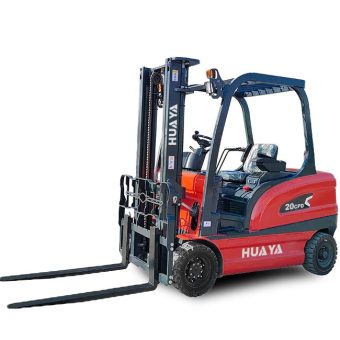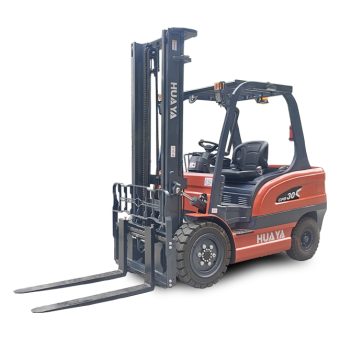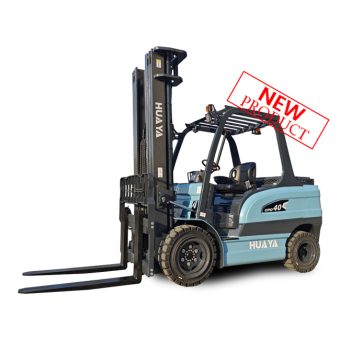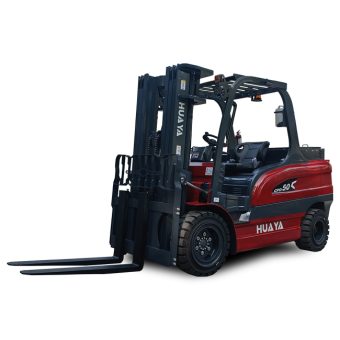
News
When it comes to material handling equipment, compliance with environmental regulations plays a critical role—especially in the United States, where strict standards are enforced by the Environmental Protection Agency (EPA). One of the most common questions asked by fleet managers, importers, and business owners is: Do electric forklifts need EPA clearance?

The simple answer is no, electric forklifts do not require EPA engine certification. However, there are still regulatory considerations that businesses should understand before purchasing or importing these machines. Let’s break down why electric forklifts are exempt, what other standards may apply, and the key points to consider when importing them.
The EPA (Environmental Protection Agency) is responsible for regulating emissions from engines that burn fuels such as diesel, propane, or gasoline. Under the Clean Air Act, any equipment with an internal combustion engine must obtain EPA certification before it can be imported, sold, or operated within the U.S.
This certification proves that the machine complies with emissions standards designed to reduce pollutants that contribute to air pollution and climate change. For example, forklifts powered by diesel engines emit nitrogen oxides (NOx), carbon monoxide (CO), and particulate matter, all of which fall under EPA scrutiny.
In contrast, electric forklifts operate without combustion engines, meaning they don’t release exhaust gases or harmful emissions. As a result, they are naturally exempt from the EPA’s engine certification requirements.
Unlike traditional forklifts, electric models rely on rechargeable batteries, such as lead-acid or lithium-ion systems, to generate power. Because they produce zero tailpipe emissions, there is no need for EPA clearance.
Here’s a quick summary of why electric forklifts bypass EPA certification:
No combustion engine: Since they don’t burn fossil fuels, they don’t emit regulated pollutants.
No EPA Form 3520-1 required: Importers of electric forklifts are not required to file the emissions certification form that applies to gas or diesel-powered machinery.
Environmentally friendly: Their clean operation makes them compliant with U.S. environmental goals without additional testing or certification.
That said, the EPA exemption does not mean electric forklifts are completely free from oversight. They must still adhere to other standards, particularly regarding safety, battery systems, and workplace compliance.
While the EPA clearance isn’t necessary, businesses should be aware of other standards that may impact electric forklift use, importation, or operation:
OSHA Regulations (Occupational Safety and Health Administration):
Forklifts must comply with workplace safety rules, including operator training and safe usage in warehouses, factories, and construction sites.
UL and ANSI Standards:
Electrical equipment, including charging systems, may require testing and certification under UL (Underwriters Laboratories) or ANSI (American National Standards Institute) to ensure safety and reliability.
Battery Regulations:
Although forklifts themselves are exempt from EPA rules, battery disposal, storage, and transportation fall under environmental guidelines. Lithium-ion batteries, for example, are considered hazardous materials during shipping.
Local Environmental and Electrical Codes:
Depending on your state or municipality, charging stations and energy storage systems may need additional approvals.
By understanding these overlapping requirements, businesses can ensure smooth compliance while enjoying the benefits of electric forklift technology.
If you’re planning to import electric forklifts, here are the most important points to keep in mind:
No EPA Form Needed: Unlike gas or diesel forklifts, you don’t need to submit EPA Form 3520-1 during customs clearance.
Proper Documentation: Clearly state on import paperwork that the forklift is electric-powered and non-emitting to avoid delays at customs.
Labeling Requirements: Make sure the forklift’s labels and manuals indicate that it operates on electricity. This helps prevent confusion and ensures smooth entry into the U.S. market.
Check State-Level Rules: Some states may impose stricter environmental or workplace safety requirements, so it’s wise to verify compliance before distribution.
In short, electric forklifts do not require EPA clearance, making them easier to import and operate compared to internal combustion forklifts. While you can bypass emissions certification, you still need to ensure compliance with workplace safety standards, electrical certifications, and battery regulations.
For fleet managers and businesses, electric forklifts not only simplify compliance but also align with the growing demand for sustainable and eco-friendly equipment. By understanding the regulatory landscape, companies can make informed decisions, avoid unnecessary delays, and confidently transition toward cleaner material handling solutions.



